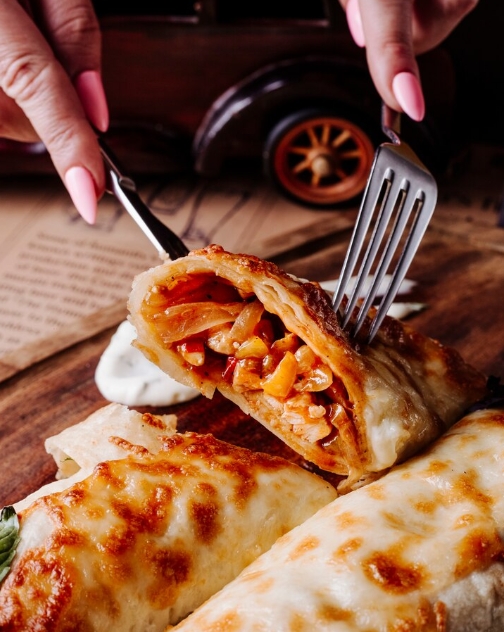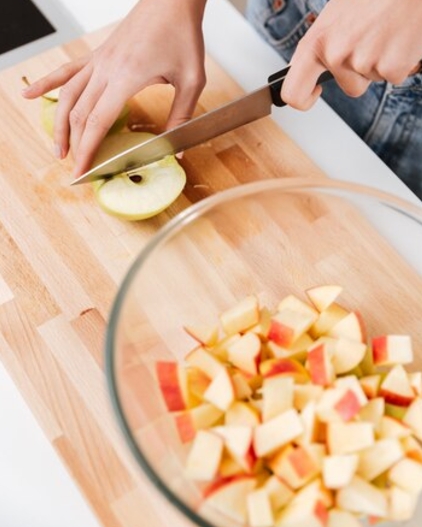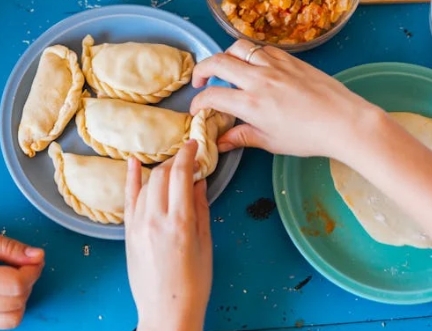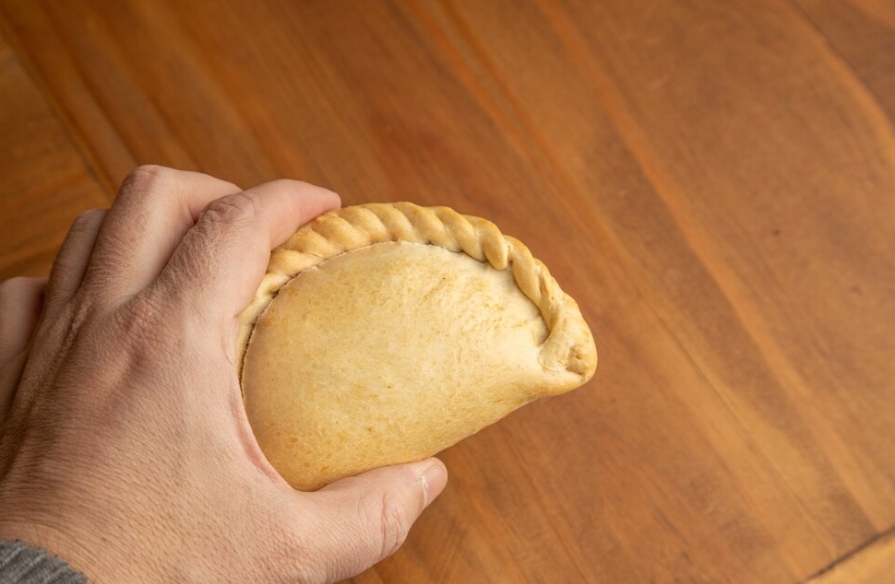More than just a meal, empanadas are a culinary narrative encased in flaky, golden pastry. These hand-held sweets, which originated in Spain and were later adopted by Latin America, represent the essence of celebration, gathering, and sharing. Whether it’s the sweet caramelized fruits, the acidic olives, or the spiced beef stuffing, every mouthful offers a taste explosion. Because they bring people from different places together under the common theme of comfort food, empanadas have a special place at the intersection of culture and cuisine.
What You Can Learn From This Recipe?
You’ll discover how to balance fillings and create a flawlessly flaky, tender pastry to create a pleasing combination of flavors and sensations.
What I Love About This Recipe?
What makes empanadas so unique is their adaptability. They are ideal for every occasion and can be baked, fried, salty, or sweet.
What’s the Best Way to Store Leftovers?
The prepared empanadas can be kept in the fridge for up to three days in an airtight container. Enjoy them cold or reheat in the oven for a crunchy texture.
What to Serve With It?
Serve delicious empanadas with a simple green salad or chimichurri sauce. Caramel drizzle or vanilla ice cream pair nicely with sweet empanadas.
Empanadas: Flaky And Irresistible
Description
With roots in Spain and other parts of Latin America, empanadas are a delectably adaptable cuisine. Anything from sweet fruits and custards to savory meats and vegetables can be put within these portable pastry. They are ideal for snacks, appetizers, or even main courses because of their flaky, golden crust, which encases a world of tastes. With a traditional past and a contemporary appeal due to their versatility, empanadas continue to be a popular dish all over the world.
For the Dough:
For the Savory Beef Filling:
Optional Sweet Filling:
Instructions
Make the Dough:
-
- In a large mixing bowl, combine flour and salt. Add cold, cubed butter and work it in with your fingers or a pastry cutter until the mixture resembles coarse crumbs.
- Beat one egg and mix it into the flour mixture.
- Add vinegar and cold water gradually, mixing until the dough comes together. Knead gently for 1–2 minutes until smooth.
- Wrap the dough in plastic wrap and refrigerate for 30 minutes.
Prepare the Savory Filling:
-
- Heat olive oil in a skillet over medium heat. Sauté onions and garlic until soft and fragrant.
- Add ground beef, breaking it apart with a wooden spoon. Cook until browned.
- Stir in the smoked paprika, cumin, chili powder, tomato paste, and olives. Cook for 5 minutes. Season with salt and pepper.
- Remove from heat and cool.
Optional Sweet Filling:
-
- In a small saucepan, melt some butter over medium heat.
- Add apples, brown sugar, and cinnamon.
- Cook until apples are soft and caramelized. Set aside to cool.
Assemble the Empanadas:
-
- Preheat oven to 350°F (175°C) if baking, or heat oil to 350°F for frying.
- Roll out the dough on a floured surface to 1/8-inch thickness. Cut out circles using a 4-inch cutter.
- Place a spoonful of the filling in the center of each circle. Fold the dough over the filling so that you form the classic half-moon shape. Seal the edges by pressing with a fork.
- Brush with beaten egg for a golden finish if baking.
Cook the Empanadas:
-
Baking:
Arrange empanadas on a lined baking sheet and bake for 20–25 minutes, or until golden.
-
Frying:
Deep fry in batches for 3–4 minutes until crisp and golden. Drain on paper towels.
Nutrition Facts
Servings 12
- Amount Per Serving
- Calories 300kcal
- % Daily Value *
- Total Fat 15g24%
- Total Carbohydrate 28g10%
- Dietary Fiber 2g8%
- Protein 10g20%
* Percent Daily Values are based on a 2,000 calorie diet. Your daily value may be higher or lower depending on your calorie needs.
Note
- You can customize empanada fillings with vegetables, cheeses, or even seafood.
- Leftover dough freezes well for up to three months.
- For the healthier version, try baking instead of frying.
Journey of Empanadas
A delicious blend of culture, history, and taste, empanadas have spread over countries and centuries to become a popular food all over the world. They have their roots in the Iberian Peninsula, where the Arabian sambousek—small, savory pies filled with spiced meat or vegetables—inspired Spanish and Portuguese cuisines. With each migration, these crescent-shaped pastries acquired regional identities and changed into what we today know as empanadas as they traveled through Spain.
Empanadas evolved into a useful supper for laborers and tourists in medieval Spain. They were perfect for field labor and lengthy trips because of their portable construction, which featured a substantial filling encased in a robust dough. The fact that the name itself is derived from the Spanish verb empanar, which means "to wrap in bread," is evidence of its straightforward yet clever design.
Spanish explorers brought empanadas to Latin America, where they found new homes. Local ingredients and customs in each area gave the empanada a distinctive flavor. With regional variations that include contents like meat, olives, and hard-boiled eggs, they rose to fame as a culinary classic in Argentina. The Caribbean islands adopted seafood empanadas brimming with tropical tastes, while Colombia and Venezuela introduced cornmeal pastry with fillings of cheese and chicken.
Formerly a Spanish colony, the Philippines adopted empanadas as a sweet treat. They are frequently filled with ripe bananas, jackfruit, or a combination of savory and sweet ingredients. Around the world, empanadas were modified to fit the ingredients that were available, demonstrating the creativity of home cooks and their capacity to elevate a basic recipe to a remarkable level.
The variety of empanadas is essential. They can be fried for a crispy, decadent finish or baked for a lighter, flakier texture. The dough is an empty canvas for inventive fillings, regardless of whether it is made with puff pastry, cornmeal, or wheat flour. Sweet fillings like caramelized fruits or creamy custards make for a lovely dessert, while savory options like seasoned meats, sautéed veggies, and cheeses are ideal for substantial snacks or dinners.
These days, empanadas are a celebration of connection and tradition rather than just food. They unite people through their enjoyment of tasty, portable snacks, whether they are offered at elegant dining establishments, street food markets, or family get-togethers. By creating international flavors like Thai curry, Mediterranean lamb, or even vegan and gluten-free versions, contemporary chefs are pushing the limits of empanada creation.
Empanadas have maintained their cultural relevance and rustic charm despite their change. They are a representation of tradition and home, frequently connected to joyous occasions or treasured childhood memories. Making empanadas, which involves rolling the dough, filling, folding, and sealing each one, is a custom that has been handed down through the generations and is a loving effort that bridges the past and present.
Empanadas bring up fond memories for many people. They bring back memories of the coziness of a dinner with loved ones, the delight of street festivals, or the coziness of a grandmother's home. Their capacity to change while remaining loyal to their origins—a harmony of creativity and tradition that appeals to people from all cultural backgrounds—is what has kept them popular for so long.
Enjoy the rich tapestry of history and heritage that an empanada represents, in addition to its exquisite flavors, the next time you bite into one. From its modest origins in medieval Spanish kitchens to their current position as a culinary icon around the world, empanadas are proof of the ability of food to unite people. I appreciate you reading, and I hope this encourages you to make these classic pastries at home!










